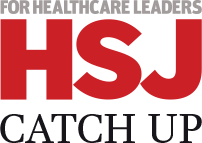The leafy villages of Great and Little Shelford lie around five miles south of Cambridge. Shelford boasts a rich history reaching back to the Domesday Book, but it is also has claim to fame in NHS circles.
It sits, of course, in Andrew Lansley’s constituency. But more specifically it is home to Gareth Goodier, chief executive of Cambridge University Hospitals Foundation Trust, and it is he who hosts a regular meeting of the most powerful men (and one woman) in acute care discussing the challenges of running England’s biggest hospitals.
The Shelford Group may be an informal talking shop, but it would be a mistake to underestimate its influence. The 10 chief executives run trusts with a combined turnover of more than £7bn (around 6 per cent of the NHS budget) and have dominated their local health economies for decades. Many of the individual chief executives too are among the most connected and consulted figures in English public service.
So when Dr Goodier says these jewels of the NHS are heading for potential financial burnout within the next few years you can be sure he will be heard.
The Shelford Group’s complaint is not a new one. Ever since the introduction of payment by results the big teaching hospitals have complained the tariff did not properly reflect the complex work they undertake. But as the money gets tighter – and tariff reform around emergency admissions and readmissions bites – they have issued an ultimatum: fix the tariff or we all face following Imperial College Healthcare Trust into financial turmoil.
With his eye on attracting the attention of politicians beyond Richmond House, Dr Goodier makes the point that financial problems at England’s leading hospitals could dent the research capability of the UK pharmaceutical sector, undermining a key export industry.
Some will dismiss his comments as the equivalent of those arguing for the scrapping of the 50p income tax rate, the rich of the NHS asking for special treatment. Others will agree with Newcastle boss Sir Len Fenwick that teaching trusts have been “looked on with suspicion for many years” and that the “dumbing down” of the NHS’s capacity to develop and deliver new treatments must be prevented.
What, unquestionably, the Shelford Group’s cri de couer does highlight is the question of how widespread research – and teaching activity – should be in an NHS facing a new financial reality. In an echo of the “centres of excellence” debate that is driving reconfiguration of stroke and trauma services, Dr Goodier says fewer trusts should be involved in training, with the obvious implication that the remaining providers would benefit from increased student numbers.
To up the controversy even further, Dr Goodier says increased funding for complex care tariffs should be found by rooting out inefficiencies in community care and that it is time to end the unfair burden acute trusts have to bear in delivering the quality, innovation, productivity and prevention drive. That again will divide people, but it is a fact that without the development of widespread community services tariffs, driving savings in this area will be next to impossible – and as the Audit Commission reminds us, the NHS appears in no position to do this.
This tension between specialist and community services is only likely to increase. The operations director of one Shelford Group trust told HSJ that in the next few years it expects to move to treating “level one” (near critical and above) patients only, with community services dealing with everyone else.
Tariff reform – for both acute and community services – will have to move much, much faster than in previous years to tackle this trend. Expect to be hearing a lot more from the Shelford Group in the future.



























6 Readers' comments